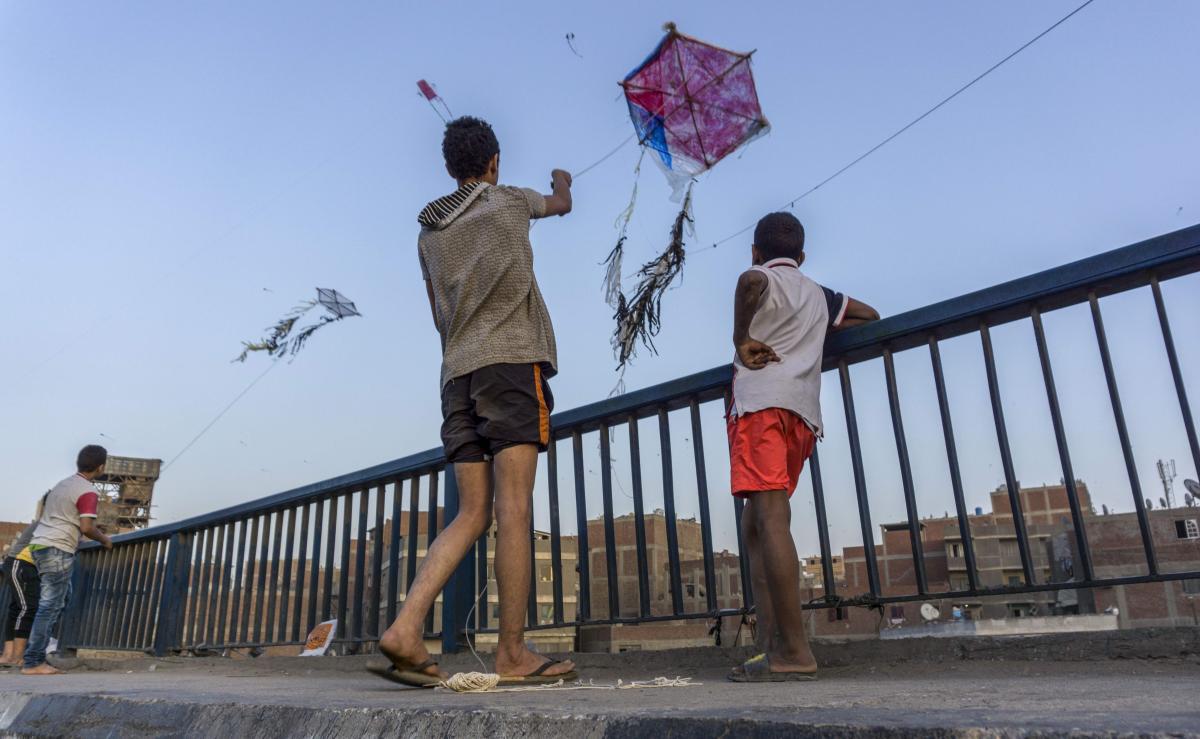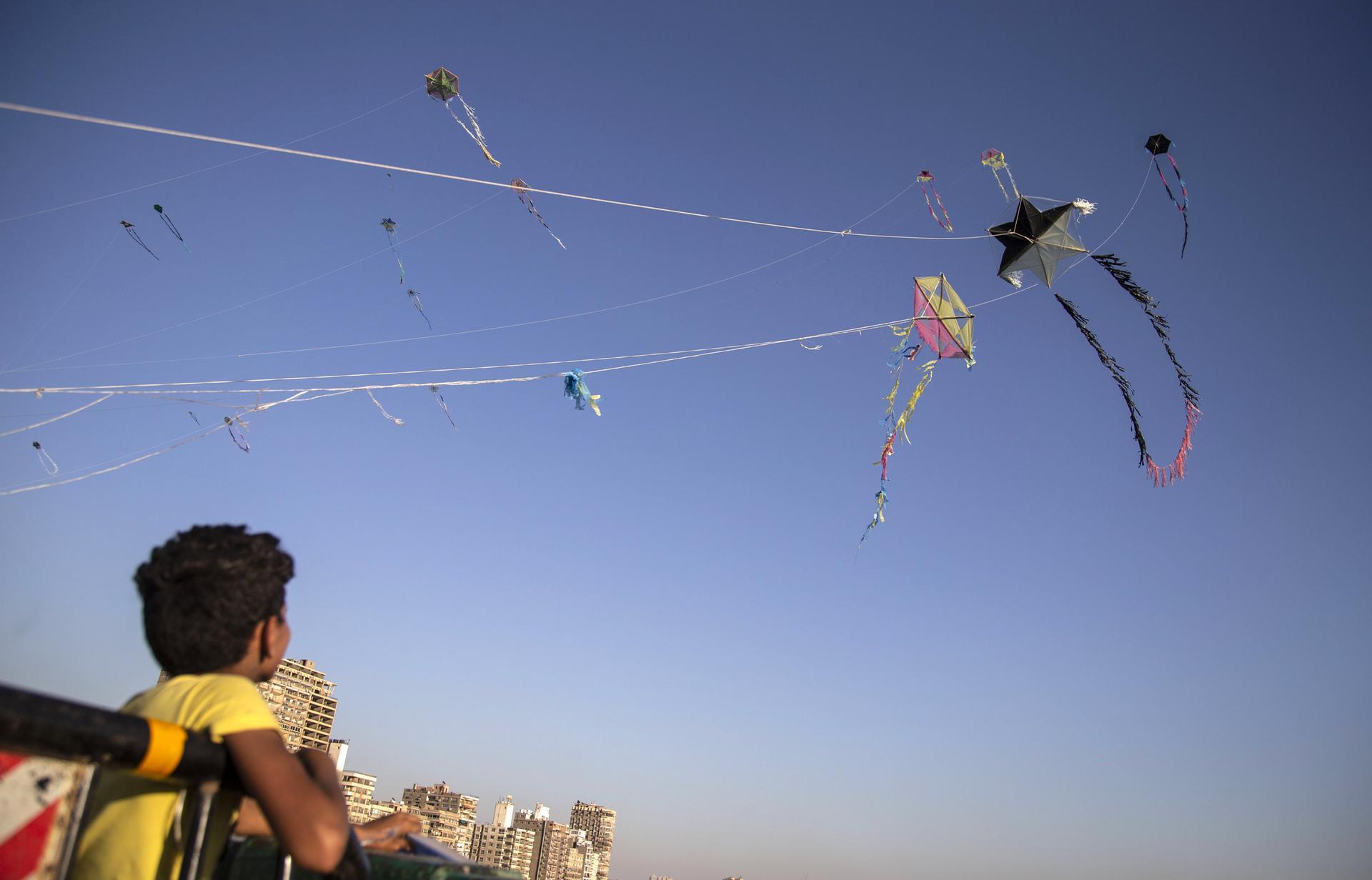A familiar friend to all Egyptians is the blue-tinted sky: on a breezy summer day, jolly paper kites fine-dot the Egyptian sky. Held by a slender string, children sail their kites and watch as they float, dive, and swim in the air.
Kite-flying is not new to Egyptian skies, kites have graced neighborhoods all over Egypt, from Nile bridges to highways and busy streets: young boys and girls can be found on high-rise rooftops flying their kites.
The activity became increasingly popular during the COVID-19 lockdown in March 2020. When boredom struck and loneliness prevailed – young Egyptians found a new outlet which became a solace amidst the world shutdown.
It quickly grew to become a citizen’s favorite pastime; it drew people of all ages and backgrounds away from their phones. Evening skies became crowded with kites, and to enable visibility at nighttime, kite-flyers often taped tiny, battery-powered light bulbs to the frames.

The sale of kites during this time became a profitable business, and street-vendors crowded the country. Prices varied from one seller to another as they largely depended on a kite’s appearance. Kites with colorful motifs and attractive designs often went up to EGP 200 (USD 11).
Kites that featured Egypt’s football star Mohamed Salah were often sold for more. Ropes for the bigger-sized kites, that measured up to 200 meters long, were sold for up to EGP 35 (USD 2). According to some sources, carpenters who were affected by the COVID-19 outbreak started selling and making kites during that time as well.

Unfortunately, the Egyptian government cracked down on kite-flying for security reasons. In June 2020, Khaled Abu Taleb, a member of the parliament’s defense and national security committee, stated that, “kites could be used to threaten national security,” as he explained they might be fitted with surveillance cameras.
Local authorities in Cairo and Alexandria have since halted all manufacturing and possessing of kites. The kite prohibition was implemented straight away, with police forces seizing more than 1500 kites in Cairo and about 300 in Alexandria in 2020. Kites were destroyed and citizens were fined. The ban was implemented in order to ensure citizens’ safety and national security.
Since then, Egypt’s skies have been clear of the jolly-colored kites that have once crowded them. For bystanders, kites will always be a fond memory for sore eyes, and for the kite-enthusiasts and fliers, kite-flying will remain a treasured activity.







Comments (0)